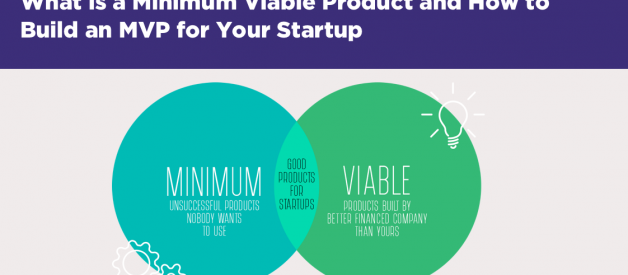7 Benefits of MVP
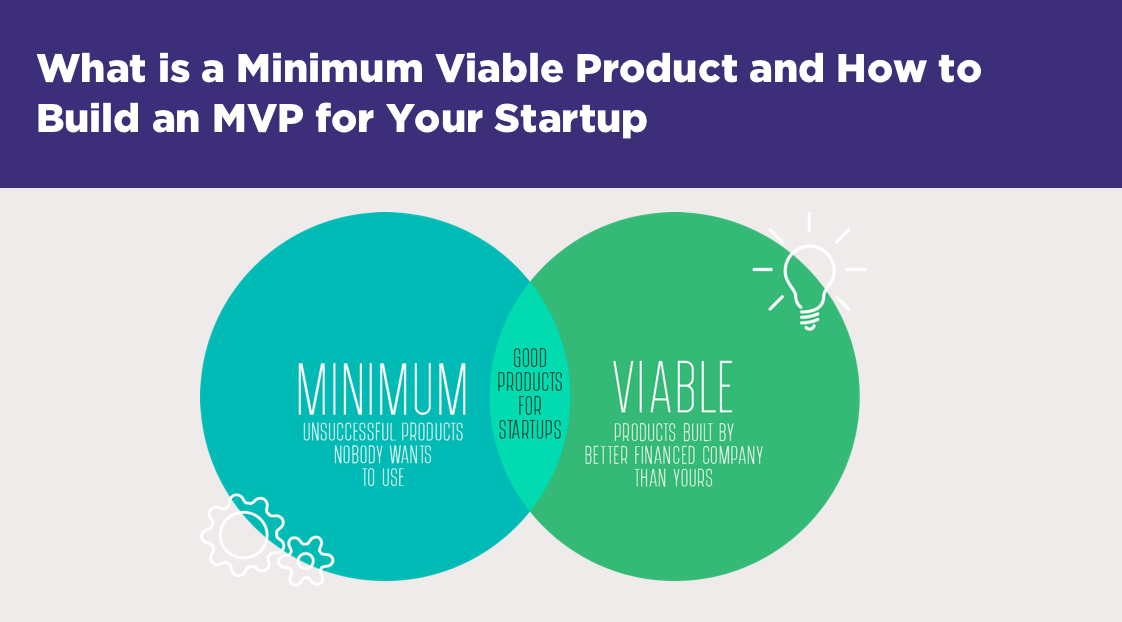
MVP meaning
Circumstances might be different for you, but you see, time goes against you. When someone has already gained success, you?re just thinking about it. But no matter where you are, now is the perfect time to launch a product. Why? First, you are eager to roll the dice while you?re reading this. Second, that has probably been on your bucket list for years. It?s time!
If you?re at that point when there is just an idea and nothing has been built yet, your only goal should be to prove the product you want to build solves a problem.
It may seem easy, but when it comes to reality, many products are built that don?t actually solve a problem for anyone. It may look brilliant, have lots of features, but at the same time be absolutely useless. How often have you encountered such situations. What? Never?
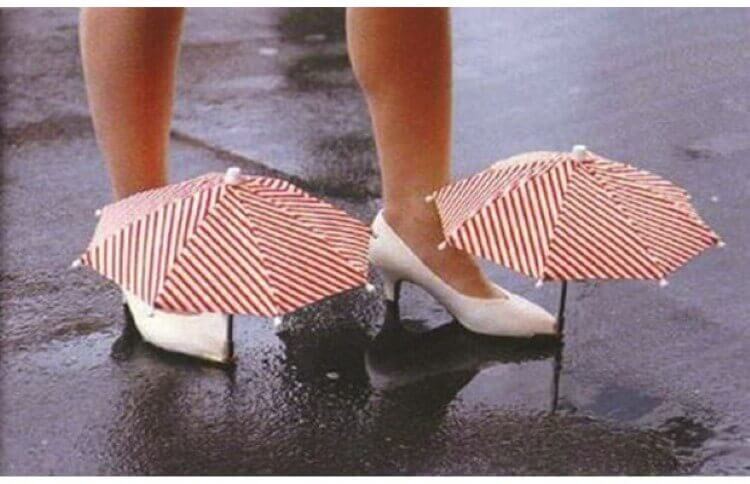
How about wearing the Shoe Umbrella? Would you like to go somewhere with two umbrellas attached to your shoes, even if your shoes are very elegant? How funny is that!
Build a product that solves a problem.
The first version of a product is often called Minimum Viable Product (MVP). You ask, what is MVP? Well, it is the product that has only the core features that make the product work. The simplest example is on the picture.
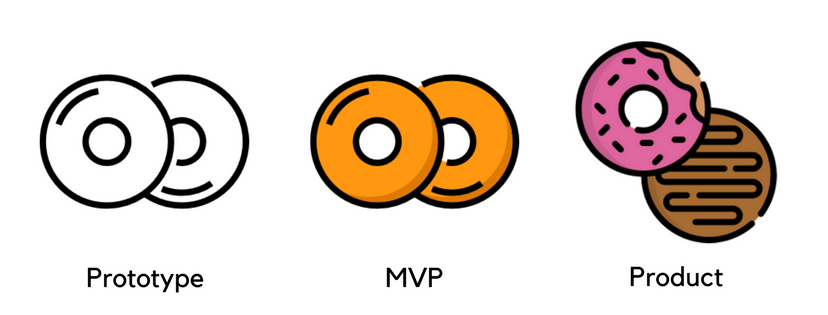
Many talented people made an impact to an MVP concept. But the most famous was the author of the Lean Startup methodology Eric Ries. He defined the MVP meaning as:
A Minimum Viable Product is that version of a new product which allows a team to collect the maximum amount of validated learning about customers with the least effort.
In general, the purpose of this product is to test the demand. The market reaction defines whether you are inspired to expand your business or just stop.
What does MVP stand for
MVP stands for minimum viable product not minimum viable prototype. As prototype serving a narrow purpose is not a product. There might be lots of similar prototypes of one product.
On the contrary, a minimum viable product is a real product and people are gonna use it and pay for it. MVP needs to have a clear goal and a set of features to promote this main feature.
Benefits of MVP
Over years of building MVP for our business partners we realized that most of them have a distorted image of minimum viable product. They mostly tend to overbuild the first release of a product. Their goal is to simply to differentiate themselves from the competition. But this just takes more time that could been spent on exploring user?s reaction and improving the product. So with an MVP we increase the product?s success chances. Here?s what it actually gives:
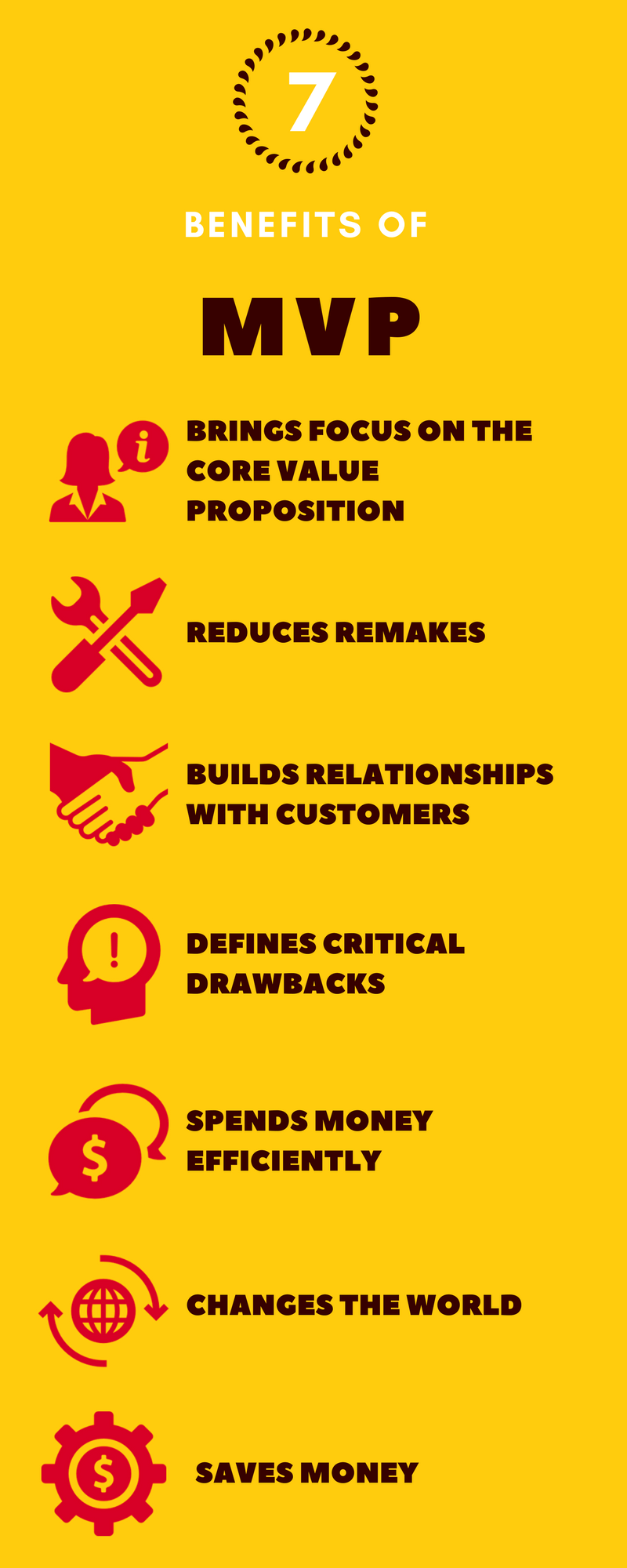
1 Brings focus on the core value proposition
With MVP you have to define your value proposition clearly and narrowly. That gives you an opportunity to define goals, needed functionality, and spend time and money efficiently.
2 Reduces remakes
Extra features may only complicate user experience. Keeping it simple will guarantee minimum remakes of the product features.
3 Builds relationships with customers
First users may provide you the needed feedback on the desired changes or additions. This will improve your product and might create a community of users.
4 Defines critical drawbacks
It allows to find weaknesses fast and improve it. It will ensure you that all the functions work properly before going further.
5 Spends money efficiently
As the product development cycles are iterative, there is no need to search for a huge amount of money at once. Over time you can invest your own money, if at first you used someone else?s money.
6 Changes the world
Only new ideas qualify as MVP, so it requires to make a difference towards what was before.
7 Saves money
In the end, if your idea is proven to be a failure at least you haven?t spent a lot of money!
How to Build an MVP for your Startup
First decide whether you need to build an MVP. If you already have an audience and this product is another way to expand your business, then you might not need it.
In other cases, just do the following.
1 Preparation process
That?s where you brainstorm your ideas and when it?s chosen you check its chances to become successful. That?s the stage where you put your idea into documentation and define what your product actually does.
2 Hiring developers
Developing a minimum viable product requires experience. If you decided to go this path, then it is time to hire a professional development team. It is better to start smart and go with the skilled ones ? well, once again saves time and money!
3 Designing the prototype
Here?s where the real thing begins. It is a step closer to the MVP. Excited? Here you need to be proactive before the testing phase begins. Once it?s build, you have something to be tested, reviewed, and analyzed.
4 Building MVP
This is the stage where you actually finish your MVP, when you have gone through some first users experience and lots of experimentations. Finally it is ready for the market. What a relief!
There is a but, as the next stage will define your product?s the whole future. Take a breath and go get you success!

Conclusion
What you need to do now is commit your future several months to creating the minimum viable product. By the way, we?ll be happy to lend a helping hand, as we already did it before.
Don?t let your valuable time pass by without acting on your dream!
If you liked this, show your support by clapping us to share with other people on Medium.
Follow us on Facebook, Instagram, LinkedIn, Behance, Medium and visit our corporate blog for more news and articles on smart solutions.
Any questions? Feel free to contact us!
Originally written for S-PRO blog.
